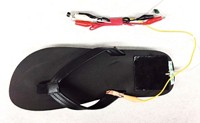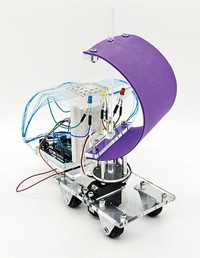Advertisement
Grab your lab coat. Let's get started
Welcome!
Welcome!
Create an account below to get 6 C&EN articles per month, receive newsletters and more - all free.
It seems this is your first time logging in online. Please enter the following information to continue.
As an ACS member you automatically get access to this site. All we need is few more details to create your reading experience.
Not you? Sign in with a different account.
Not you? Sign in with a different account.
ERROR 1
ERROR 1
ERROR 2
ERROR 2
ERROR 2
ERROR 2
ERROR 2
Password and Confirm password must match.
If you have an ACS member number, please enter it here so we can link this account to your membership. (optional)
ERROR 2
ACS values your privacy. By submitting your information, you are gaining access to C&EN and subscribing to our weekly newsletter. We use the information you provide to make your reading experience better, and we will never sell your data to third party members.
Electronic Materials
The motion of molecules makes electricity
Researchers say piezoelectric nanowire arrays can generate electricity from molecular motion
by Prachi Patel, special to C&EN
October 23, 2023
| A version of this story appeared in
Volume 101, Issue 35
At temperatures above absolute zero, molecules in any substance move constantly in a random manner. Now, researchers have developed a way to capture the energy from this motion of liquid molecules and convert it into electricity (APL Mater. 2023, DOI: 10.1063/5.0169055).
The 2 cm x 2 cm prototype device produces picowatt levels of power. But the concept could eventually provide microwatt power levels that could run items like wearable electronics and medical implants, says Yucheng Luan, who founded East Eight Energy in Shanghai and led the work. Molecular thermal motion, he says, provides a small amount of energy, but liquids and gases are found everywhere. “If their motion can be converted into electricity, the potential is very huge. This is a new, green, environmentally friendly energy source,” Luan says.
In an effort to produce sustainable power, many teams are trying to harvest energy from sources such as human motion, blood flow, and heartbeats. Although piezoelectric materials can convert mechanical deformation into electricity, no one has created a viable device to tap into molecular thermal motion yet, says Luan.
To do that, Luan and his colleagues made two electrodes, each with a brushlike array of 25 nm wide, 3.4 µm long nanowires made of piezoelectric zinc oxide. They coated one of the arrays with gold. Then they infused the nanowire arrays with n-octane, put the two electrodes together with the strands touching each other, like Velcro, and encased the device in epoxy.
As molecules in the liquid collide with the nanowires, the wires bend and wriggle, generating a tiny amount of electricity. The 4 cm2 device produces 2.28 mV and 2.47 nA at room temperature. Luan says the team is now working on increasing the output from this proof-of-concept device by making bigger devices and testing different liquids, piezoelectric materials, and device structures.





Join the conversation
Contact the reporter
Submit a Letter to the Editor for publication
Engage with us on Twitter